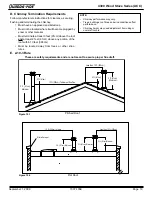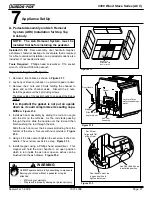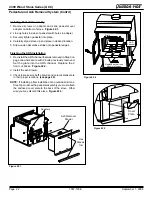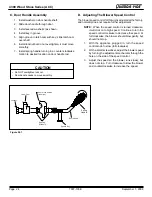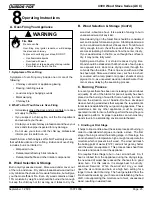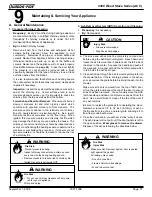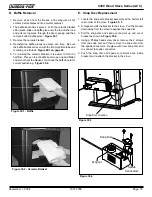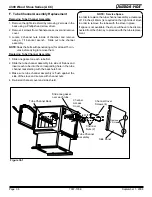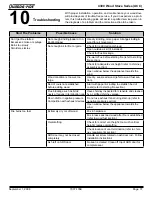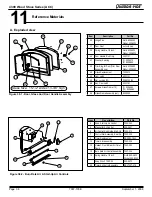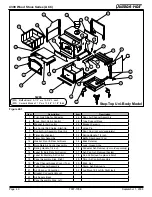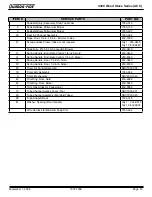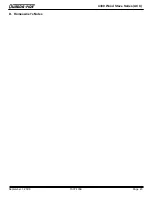
Page 2
7037-135E
September 1, 2008
R
4300 Wood Stove Series (ACC)
4. Cleaning Plated Surfaces
• Frequency:
Prior to first burn and then as desired
• By:
Homeowner
Clean all the fingerprints and oils from plated surfaces
BEFORE
firing the appliance for the first time. If not
cleaned properly before lighting your first fire, the oils
can cause permanent markings on the plating.
After the plating is cured, the oils will not affect the
finish and little maintenance is required. Wipe clean as
needed.
Handle glass assembly with care.
When cleaning glass:
• Avoid striking, scratching or
slamming glass.
• Do NOT clean glass when hot.
CAUTION
• Do NOT use abrasive cleaners.
• Use a hard water deposit glass cleaner on white film.
• Use commerical oven cleaner on heavier deposits.
• Remove all residue of oven cleaner or will permanently
stain glass on next firing.
•
Refer to maintenance instructions.
Glass
Assembly
CAUTION
• Do not use polishes with abrasives.
It will scratch plated surfaces.
5. Glass Cleaning
• Frequency:
As desired
• By:
Homeowner
Clean glass with a non-abrasive glass cleaner. Abrasive
cleaners may scratch and cause glass to crack. If the
deposits on the glass are not very heavy, normal glass
cleaners work well. Heavier deposits may be removed
by using a damp cloth dipped in wood ashes or by using
a commercially available oven cleaner.
After using an oven cleaner, it is advisable to remove any
residue with a glass cleaner or soap and water. Oven
cleaner left on during the next firing can permanently
stain the glass and damage the finish on plated metal
surfaces.
A portion of the combustion air entering the firebox is deflected
down over the inside of the door glass. This air flow “washes”
the glass, helping to keep smoke from adhering to its sur
-
face.
When operated at a low burn rate, less air will be flowing over
the glass and the smokey, relatively cool condition of a low
fire will cause the glass to become coated.
Operating the appliance with the Burn Rate Air Control and
Start-Up Air Control all the way open for 15-20 minutes should
remove the built up coating.
3. Disposal of Ashes
Fire Risk.
Disposal of Ashes
WARNING
• Ashes should be placed in metal container with tight
fitting lid.
• Do not place metal container on combustible
surface.
• Ashes should be retained in closed container until all
cinders have thoroughly cooled.
• Frequency:
When ash is within 1-/4 in. (44mm) of firebox
lip
• By:
Homeowner
Ashes should be placed in a metal container with a
tight fitting lid. The closed container of ashes should
be placed on a non-combustible floor or on the ground,
well away from all combustible materials, pending final
disposal.
If the ashes are disposed of by burial in soil or otherwise
locally dispersed, they should be retained in the closed
container until all cinders have thoroughly cooled.


